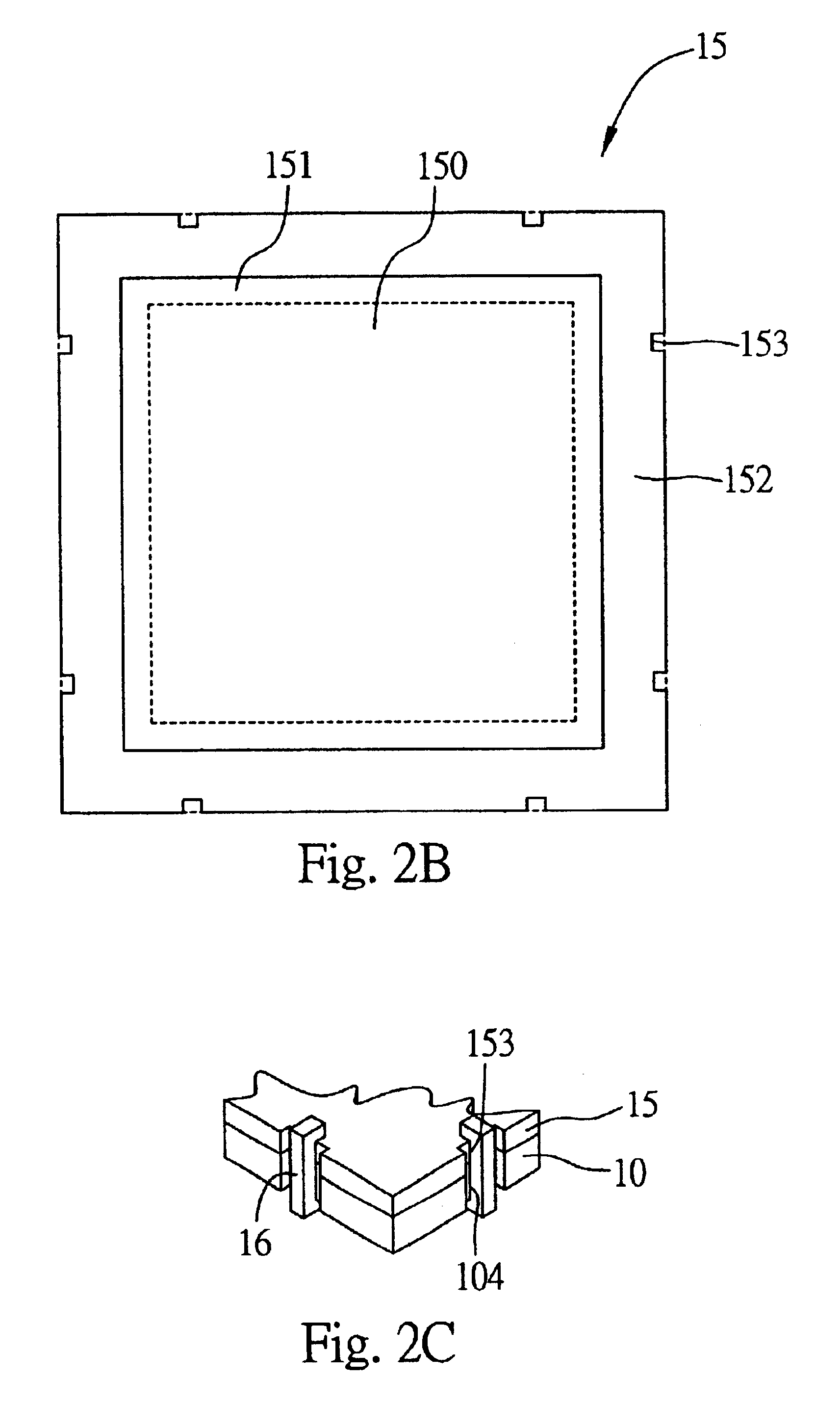Semiconductor package with heat sink attached to substrate
a technology of heat sink and substrate, which is applied in the direction of semiconductor devices, semiconductor/solid-state device details, electrical apparatus, etc., can solve the problems of affecting the trace routability of the substrate, dislocation of the heat sink, and damage to the attachment between the heat sink and the substrate via adhesive or solder, so as to eliminate chip cracks and less damage to the substrate. , the effect of reducing the damag
- Summary
- Abstract
- Description
- Claims
- Application Information
AI Technical Summary
Benefits of technology
Problems solved by technology
Method used
Image
Examples
first preferred embodiment
FIG. 1 illustrates a semiconductor package according to a first preferred embodiment of the invention. As shown in the drawing, this semiconductor package uses a substrate 10 as a chip carrier primarily made of a conventional resin material such as epoxy resin, polyimide resin, BT (Bismaleimide Triazine) resin, FR4 resin, etc.
The substrate 10 has an upper surface 100 and a lower surface 101 opposed to the upper surface 100. The upper surface 100 of the substrate 10 is formed with a plurality of bond pads 102 at predetermined positions where solder bumps 12 are bonded, and the lower surface 101 of the substrate 10 is formed with a plurality of ball pads 103 for being implanted with solder balls 17. The substrate 10 is fabricated by conventional processes which are not to be further detailed herein.
As shown in FIG. 2A, an edge of the substrate 10 is formed at predetermined positions with a plurality of inwardly recessed grooves 104 penetrating through the upper and lower surfaces 100,...
second preferred embodiment
FIG. 3 illustrates a semiconductor package according to a second preferred embodiment of the invention. As shown in the drawing, this semiconductor package is structurally similar to that of the first preferred embodiment, with the difference in that the flange 152 of the heat sink 15 is not formed with grooves; instead, coverage of the flange 152 is slightly smaller than that of the substrate 10, for example, the edge of the flange 152 being flush with dead ends of the grooves 104 of the substrate 10, such that the clip members 16 are engaged with the grooves 104 of the substrate 10 and clamp the heat sink 15 and the substrate 10.
third preferred embodiment
FIG. 4 illustrates a semiconductor package according to a third preferred embodiment of the invention. As shown in the drawing, this semiconductor package structurally differs from that of the first preferred embodiment in that the flange 152 of the heat sink 15 is attached to the upper surface 100 of the substrate 10 by means of an adhesive 19 so as to further firmly position the heat sink 15 on the substrate 10.
The above semiconductor package yields significant benefits in the use of a plurality of flexible clip members to clamp the substrate and the flange of the heat sink mounted on a surface of the substrate so as to secure the heat sink on the substrate in position. The edge of the substrate and / or the edge of the flange is formed with a plurality of grooves to be engaged with the clip members, such that the substrate and the heat sink can be clamped by the clip members. Moreover, the grooves of the substrate are preferably situated at positions corresponding to space between ...
PUM
 Login to View More
Login to View More Abstract
Description
Claims
Application Information
 Login to View More
Login to View More - R&D
- Intellectual Property
- Life Sciences
- Materials
- Tech Scout
- Unparalleled Data Quality
- Higher Quality Content
- 60% Fewer Hallucinations
Browse by: Latest US Patents, China's latest patents, Technical Efficacy Thesaurus, Application Domain, Technology Topic, Popular Technical Reports.
© 2025 PatSnap. All rights reserved.Legal|Privacy policy|Modern Slavery Act Transparency Statement|Sitemap|About US| Contact US: help@patsnap.com



